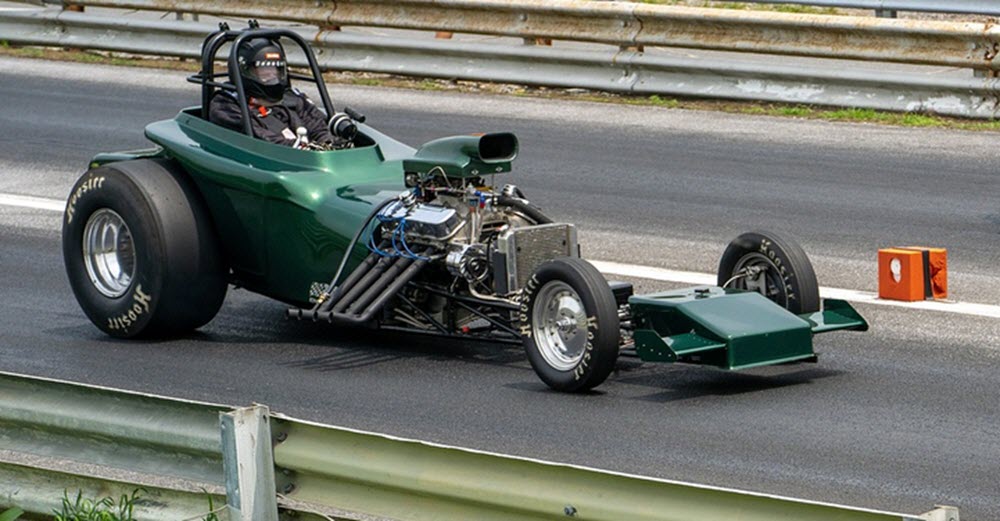On this page:
Drag racing is a type of motor racing where vehicles compete, usually two at a time, to be the first to complete a short, straight course and cross a set finish line.
The standing start is an important aspect of drag racing. Push starts were necessary to get the engines running the past, but the National Hot Rod Association (NHRA) has been requiring self-starters since 1976.

Distances
- The standard distance of a drag race is 1,320 feet ( +- 0,2% FIA & NHRA rules), but some races use other distances.
- Some sanctioning bodies are now using a 1,000 feet distance instead for certain classes, due to safety concerns. The NHRA does it for its Top Fuel and Funny Car classes. The 1,000 feet distance has also become popular for bracket racing, and it is used by the revived American Drag Racing League for its primary classes (not Jr Dragster).
- Some of the organizations that deal with Pro Modified and “Mountain Motor” Pro Stock Cars (PDRA) use a 660 feet distance, even when the track is 1,320 feet. (While 1,320 feet is1/2 of a mile, 660 feet is 1/8 of a mile.)
- There are also drag strips that run only 660 feet.
Examples of famous drag racing cars
The Panorama City Special
Designed by the trailblazing hot rodder Mickey Thompson, The Panorama City Special is generally acknowledged as the first “slongshot” dragster. Built in 1954, it debuted the following year at the first NHRA US Nationals at Great Bend, Kansas. It proved slow during its initial outing, but later in the year it became the first single-engined fueller to exceed 150 mph.
Smokin´White Owl
Designed and built by George “Ollie” Morris in 1954, this was a purpose-built rear-engined dragster with a distinct cigar shape. It originally had a flathead Ford V8, but in 1955 it became the first drag car to use a Chevrolet V8.
The Greer-Black-Prudhomme dragster
Built in 1962, this dragster has the best win record in NHRA history.
Eliminator I
Built by the Logghe Brothers in 1966, the Eliminator I is considered the fist true Funny Car.
Vanishing Point
The Vanishing Point was a rocket-powered Funny Car built by Sammy Miller in 1979. In 1984, it set a new world record for fastest quarter-mile time (3.58 seconds) and this record is still standing.
A few basic drag racing concepts
Pass
Each race during an event is called a pass.
Burnout
Before each pass, the driver is allowed to perform a burnout. This heats the driving tires and lays rubber down at the beginning of the track, which improves traction.
The Christmas tree
Nowadays, the pass is started electronically by a system called the Christmas tree. It consists of a column of lights for each driver/lane, and two light beam sensors per lane on the track at the starting time.
When the first light beam is broken by a vehicle´s front tire, the vehicle is pre-staged (circa 7 inches from the starting line) and the pre-stage indicator on the Christmas tree lights up.
When the second light beam is broken, the vehicle is staged, and the stage indicator lights up on the “Christmas tree”.
One a vehicle is staged, the competitor has a set amount of time to stage as well. (If they don´t, they are immediately disqualified and a red light will light up on the Christmas tree.) When both vehicles are staged, the system randomly elects how much time to wait before starting the race. The wait is always short, but the exact amount of time is selected randomly within a short span to prevent any driver from learning exactly when the start signal will come.
The light sequence for starting varies depending on organizer and class. For NHRA Professional classes, three amber lights on the Christmas tree will flash simultaneously, followed 0.4 seconds later by a green light.
This article was last updated on: January 30, 2023
